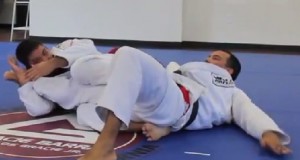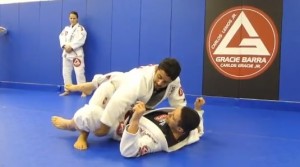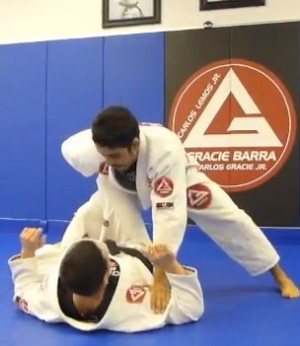Leg Locks – 3 Important Points
One of the somewhat controversial debates in the bjj world is the subject of leg locks in training.
In many bjj academies, lesser attention is given to leg locks than to the other submissions of triangles, chokes, armlocks and omoplatas.
Why is this? The legs offer two joints – knees and ankles – to attack. Jiu-jitsu has an unlimited number of attacks on the human body, so why are leg locks given such short shrift?
Leg lock attacks are divided into roughly 4 categories:\
1) straight foot / ankle locks
2) heel hooks – both inside and outside
3) toe holds
4) knee bars
There are some bjj competitors that specialize in leg locks – notably Gracie Barra’s Victor Estima and the feared Rousimar Palhares in mma. With different rules sets in grappling competitions, competitors may utilize varying numbers of attacks. When you know your opponent can attack your legs, it changes your guard strategy!
There are some things to consider when you train leg submissions that make them different than your more popular armlocks and chokes:
1) IBJJF rules on foot locks
The rules on using leg locks in sports competition are a significant factor in how they are used in bjj.
The controversial “leg reaping” rule limits the legal ways you may configure your legs to control and attack your opponent. The arguably safer & legal leg position affords less control of your opponent and makes leg attacks a riskier proposition.
The rules for which locks are allowable according to belt experience also limit how many students on the mat may utilize leg lock attacks. Since the majority of the members of most academies tend to be white belts, there are fewer that will be actively using and training the leg locks.
See the chart from the IBJJF rule book on which leg locks are legal by belt level under IBJJF rules.
2) Threat of injury
Early in my study of bjj, a top instructor told me that the reason leg locks were less popular in bjj was the threat of injury that they posed.
He explained that the legs differed from the arms in that there was less pain involved in several of the leg attacks. That a student could be caught in a submission and struggle to escape when something would pop!
He said that (if the student didn’t tap early enough):
armlocks = more pain but less damage
leg locks = less pain but more damage
 The pain of an armlock will make the student caught tap earlier, before much damage could occur to the joint.
The pain of an armlock will make the student caught tap earlier, before much damage could occur to the joint.
Meanwhile, with a leg lock attack, since there was little comparative pain (especially in the case of a heel hook) the student might struggle against the submission before an audible “Pop!” and the joint has been severely damaged (ex. ACL damage).
Students with lesser experience in jiu-jitsu may not recognize when their leg is in a dangerous position and suffer a knee injury that takes them off of the mats.
In the interest of reducing risk of potentially serious knee injuries in the academy, the use of leg locks especially by less experienced students is discouraged.
3) Harm to development in your overall bjj game
In my opinion, introducing students to leg locks too early in their study of bjj has a negative effect on their development of the more important skills of advancing their positions (ex. guard passing to mount).
I love to use leglocks in my own game, but also recgnize that they may not be suitable to all levels of students.
 One of the most difficult skills to learn in bjj is passing the open guard of a skilled spider guard player. If the student relies on leg lock attacks, they may not spend the time to learn technical guard passing and advance to a side control / mount position.
One of the most difficult skills to learn in bjj is passing the open guard of a skilled spider guard player. If the student relies on leg lock attacks, they may not spend the time to learn technical guard passing and advance to a side control / mount position.
Frustrated by the difficulty of passing an open guard, the student is tempted all to often to abandon the guard pass and go straight for an easy submission.
The hierarchy of ground positions in bjj is the foundation of the art and sport. Looking for a submission shortcut and avoiding this critical skill development is not a sound longer term strategy for learning bjj.
 Following this reasoning, the instructor my decide to limit the amount of leg lock attacks in order to channel the students learning to the more important area of guard passing and skill of advancing and controlling ground positions.
Following this reasoning, the instructor my decide to limit the amount of leg lock attacks in order to channel the students learning to the more important area of guard passing and skill of advancing and controlling ground positions.
Leg locks must be a part of the complete jiu-jitsu game. But the knowledgeable practitioner recognizes these other factors and trains leg locks more intelligently.
Do you use leg locks in your bjj game?
Credits: Mark Mullen
Gracie Barra Black belt based in Taipei, Taiwan
Twitter: @MarkMullenBJJ


